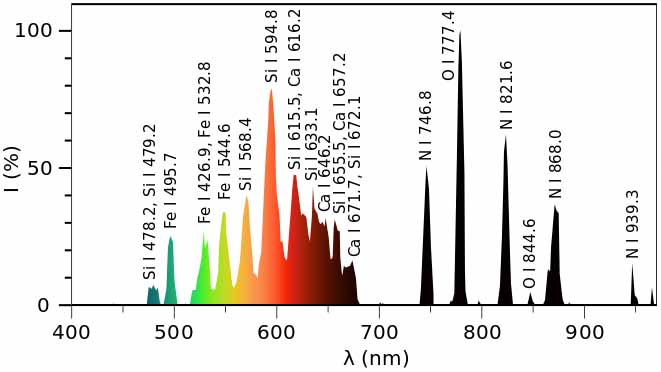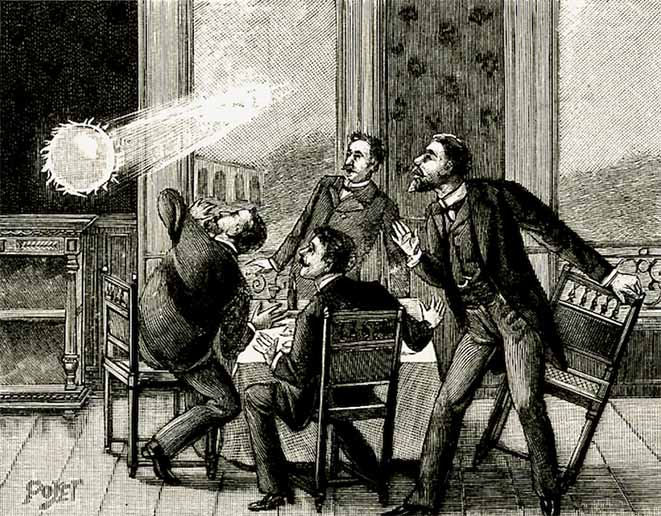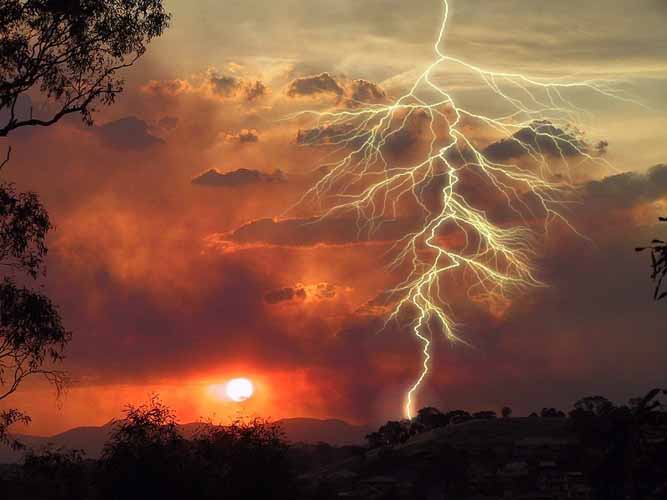

Ball lightning is an unexplained atmospheric electrical phenomenon. The term refers to reports of luminous, spherical objects that vary from pea-sized to several meters in diameter. Though usually associated with thunderstorms, the phenomenon lasts considerably longer than the split-second flash of a lightning bolt. Many early reports claim that the ball eventually explodes, sometimes with fatal consequences, leaving behind the odor of sulfur.
Until the 1960s, most scientists argued that ball lightning was not a real phenomenon but an urban myth, despite numerous reports from throughout the world. Laboratory experiments can produce effects that are visually similar to reports of ball lightning, but how these relate to the natural phenomenon remains unclear. Scientists have proposed many hypotheses about ball lightning over the centuries. Scientific data on natural ball lightning are scarce, owing to its infrequency and unpredictability. The presumption of its existence depends on reported public sightings, and has therefore produced somewhat inconsistent findings. Owing to inconsistencies and to the lack of reliable data, the true nature of ball lightning remains unknown. The first ever optical spectrum of what appears to have been a ball-lightning event was published in January 2014 and included a video at high frame-rate.

In January 2014, scientists from Northwest Normal University in Lanzhou, China, published the results of recordings made in July 2012 of the optical spectrum of what was thought to be natural ball lightning made by chance during the study of ordinary cloud–ground lightning on the Tibetan Plateau.
At a distance of 900 m (3,000 ft), a total of 1.64 seconds of digital video of the ball lightning and its spectrum was made, from the formation of the ball lightning after the ordinary lightning struck the ground, up to the optical decay of the phenomenon. Additional video was recorded by a high-speed (3000 frames/sec) camera, which captured only the last 0.78 seconds of the event, due to its limited recording capacity. Both cameras were equipped with slitless spectrographs.
The researchers detected emission lines of neutral atomic silicon, calcium, iron, nitrogen and oxygen - in contrast with mainly ionized nitrogen emission lines in the spectrum of the parent lightning. The ball lightning traveled horizontally across the video frame at an average speed equivalent of 8.6 m/s (28 ft/s). It had a diameter of 5 m (16 ft) and covered a distance of about 15 m (49 ft) within those 1.64 s.
Oscillations in the light intensity and in the oxygen and nitrogen emission at a frequency of 100 hertz, possibly caused by the electromagnetic field of the 50 Hz high-voltage power transmission line in the vicinity, were observed. From the spectrum, the temperature of the ball lightning was assessed as being lower than the temperature of the parent lightning (<15,000–30,000 K (14,700–29,700 °C; 26,500–53,500 °F)). The observed data are consistent with vaporization of soil as well as with ball lightning's sensitivity to electric fields.

It has been suggested that ball lightning could be the source of the legends that describe luminous balls, such as the mythological Anchimayen from Argentinean and Chilean Mapuche culture. In a 1960 study, 5% of the population of the Earth reported having witnessed ball lightning. Another study analyzed reports of 10,000 cases. Read more ...
800-Year-Old Chronicle Turns Out to Be Earliest Report of Ball Lightning in England Science Alert - January 29, 2022
On June 7, 1195, a fiery spinning ball emerged from a dark cloud in an erstwhile sunny sky close to the London lodgings of the bishop of Norwich. Witnesses could never have known that the natural phenomenon that they were seeing would defy scientific explanation for more than 800 years. For what they observed has all the hallmarks of ball lightning: an atmospheric effect, the origin of which remains hotly disputed. An account of this extraordinary moment survives in a monastic chronicle compiled between about 1180 and 1199 by Gervase, a monk of Christ Church Cathedral in Canterbury. It would appear that this is the first credible written record of ball lightning in England, and much more convincing than an earlier European description. Previously the earliest record of a sighting was believed to be from the 17th century. This extensive work (nearly 600 pages in its modern edition) records historical events in England and further afield, the friends and enemies of the monastic house, and descriptions of noteworthy or unusual natural phenomena. The writing includes descriptions of solar and lunar eclipses, earthquakes and floods.
A New Explanation for One of the Strangest Occurrences in Nature: Ball Lightning Nautil.us - July 24, 2016
Some fireballs appear to be the products of living organisms. The decay of organic matter, for example, in marshes and other wetlands (or even a mass grave in a Polish forest) leads to the release of methane and phosphorus-containing gases such as phosphine, which can spontaneously catch fire after encountering oxygen in the atmosphere, producing a flickering light suspended midair. Some, on the other hand, are electrical in origin, sparking within the ground during an earthquake as stressed rocks release a stream of electrons to the surface where, interacting with air, they produce flashes of light. Still others form in the atmosphere, usually during thunderstorms, and go by the name of ball lightning.

Lightning, Sprites, Elves